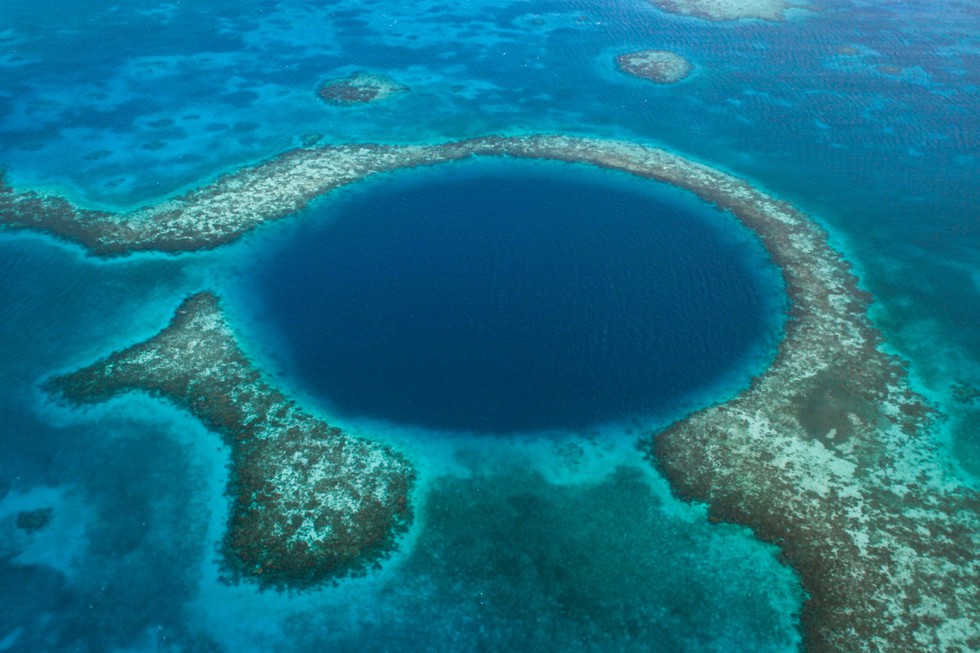What is a Blue Hole?
- They are water-filled vertical caverns, or sinkholes, found in coastal regions where the bedrock is made of soluble material, such as limestone, marble, or gypsum.
- They form when water on the surface percolates through the rock, dissolving minerals and widening cracks, which eventually causes the rock to collapse.
- Famous examples include Dean's Blue Hole in the Bahamas, the Dahab Blue Hole in Egypt, and the Great Blue Hole in Belize.
About Taam Ja' Blue Hole:
- It is the deepest known underwater sinkhole in the world.
- It sits in Chetumal Bay off the southeast coast of the Yucatan Peninsula in Mexico.
- It is 390 feet (119 m) deeper than the previous record holder— the 990-foot-deep (301 m) Sansha Yongle Blue Hole, also known as the Dragon Hole, in the South China Sea.
- Spread over an area of 13,660 square meters, the giant, underwater cavern has been named Taam Ja’ which means "deep water" in Mayan.
- The submerged blue hole has a nearly circular shape at its surface with steep sides that form a large conic structure covered by biofilms, sediments, limestone, and gypsum ledges.
Key facts about Yucatan Peninsula:
- It is a northeastern projectionof Central America, extending into the Atlantic Ocean.
- The Gulf of Mexico lies on its western and northern sides. The Caribbean Sea lies on its eastern side. The northern part of Yucatán is in Mexico. Belize and a part of Guatemala are in the south.
- The peninsula is almost wholly composed of beds of coralline and porous limestone rocks.
